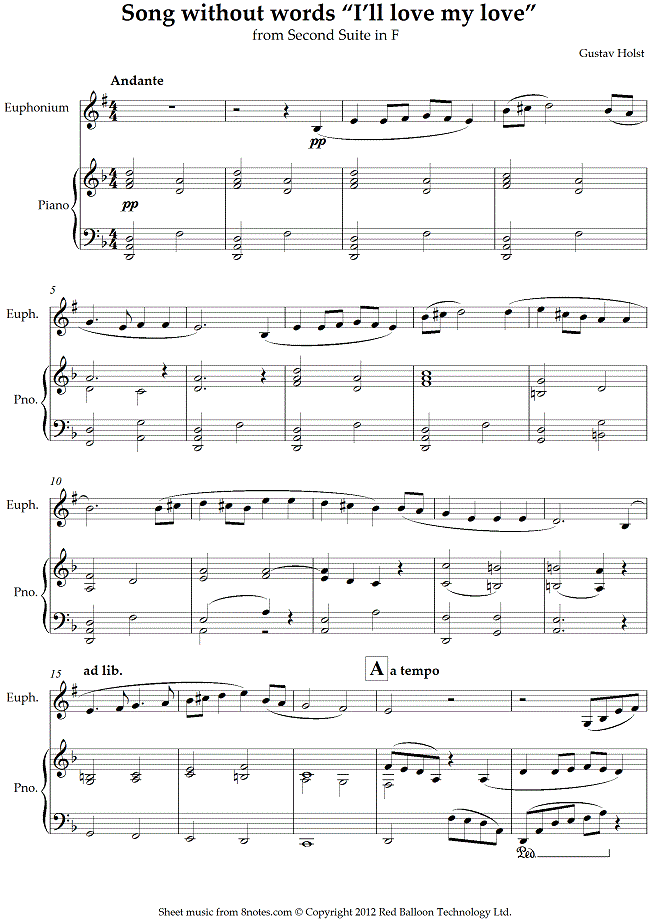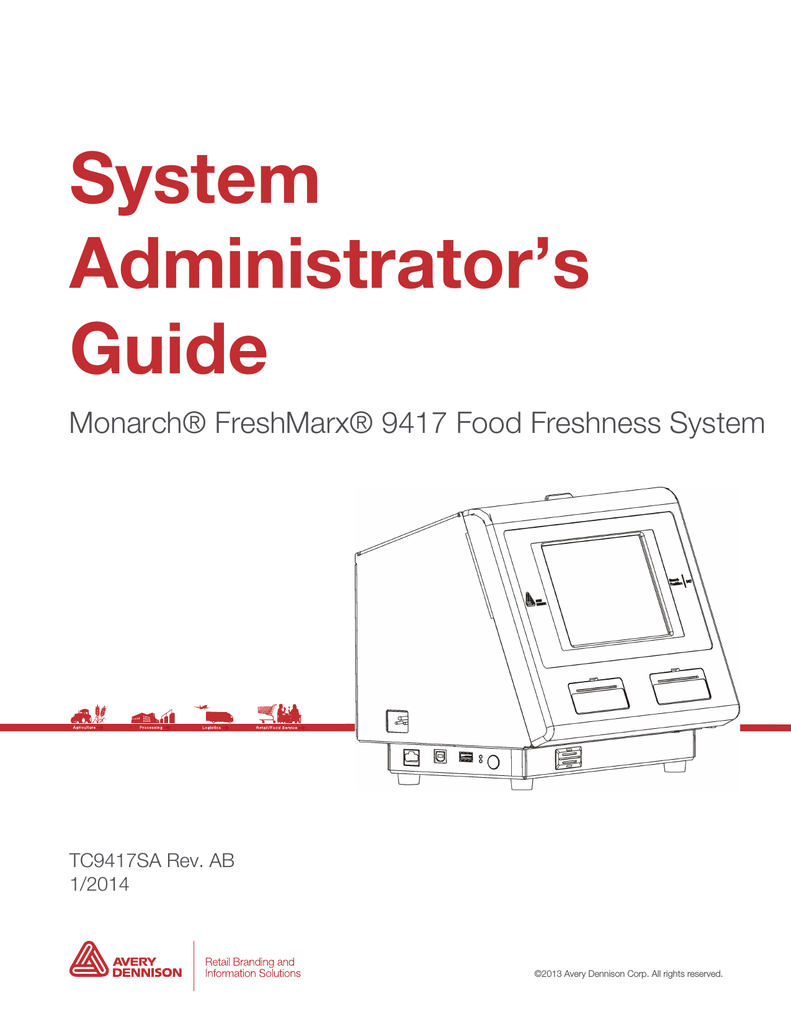Holst Second Suite Program Notes
Gustav Holst (1874-1934) was a British composer and teacher. After studying composition at London’s Royal College of Music, he spent the early part of his career playing trombone in an opera orchestra. It was not until the early 1900s that his career as a composer began to take off. Around this same time he acquired positions at both St. Paul’s Girls’ School and Morley College that he would hold until retirement, despite his rising star as a composer.
His music was influenced by his interest in English folk songs and Hindu mysticism, late-Romantic era composers like Strauss and Delius, and avant-garde composers of his time like Stravinsky and Schoenberg. He is perhaps best known for composing The Planets, a massive orchestral suite that depicts the astrological character of each known planet. His works for wind band (two suites and a tone poem, Hammersmith) are foundational to the modern wind literature.The Second Suite in F was written in 1911, but not performed until 1922. Each of its four movements uses one or more folk songs as its melodic material, best outlined by the Philharmonic Winds. Holst’s Second Suite in E-Flat, composed in 1911, uses English folk songs and folk dance tunes throughout, being written at a time when Holst needed to rest from the strain of original composition.
The opening march movement uses three tunes, the first of which is a lively morris dance. The folk song “Swansea Town” is next, played broadly and lyrically by the euphonium, followed by the entire band playing the tune in block harmonies - a typically English sound.
“Claudy Banks” is the third tune, brimming with vitality and the vibrant sound of unison clarinets. The first two tunes are repeated to conclude the first movement.
The second movement is a setting for the English folk song “I’ll Love My Love.” It is a sad story of a young maiden driven into Bedlam by grief over her lover being sent to sea by his parents to prevent their marriage. The Hampshire folk song, “The Song of the Blacksmith,” is the basis of the third movement, which evokes visions of the sparks from red hot metal being beaten with a lively hammer’s rhythm on the blacksmith’s anvil. The English country-dance and folk song, “The Dargason,” dating from the sixteenth century, completes the suite in a manner that continues to cycle and seems to have no end. The Elizabethan love tune “Greensleeves” is intertwined briefly and withdrawn before the final witty scoring of a piccolo and tuba duet four octaves apart. For those interested in singing along with some Holst, many of the folk songs used in the Second Suite have their lyrics published on the internet:From the “March”: “Morris Dance” is an instrumental dance; starts with the euphonium solo; is the 6/8 section.
That link leaves out the chorus, which you can find in Bob Garofalo’s great resource book, Folk Songs and Dances in Second Suite, as well as“Song without Words” is actually“Song of the Blacksmith” lyrics can be found on“Fantasia on the Dargason”: The itself is an instrumental dance tune, related to popular melodies like “The Irish Washerwoman”. This movement also includes, usually a sad-sounding song, as a rather joyous interlude and a powerful climax.– a major web resource for information on the composer.

This article includes a, but its sources remain unclear because it has insufficient. Please help to this article by more precise citations. ( May 2009) The First Suite in E ♭ for Military Band, Op. 1, by the British composer is considered one of the masterworks in the repertoire. Officially premiered in 1920 at the Royal Military School of Music, the manuscript was originally completed in 1909.Along with the subsequent, written in 1911 and premiered in 1922, the First Suite convinced many other prominent composers that serious music could be written specifically for band. Contents.Background Bands first evolved in the military, with the being formed in 1557, but at the turn of the 20th Century the term 'military band' was being applied to any ensemble that incorporated woodwinds, brass and percussion, including civilian bands organised by local police, fire brigades, and even industrial firms.The majority of music played by British military bands around this time consisted of popular music and orchestral transcriptions. No serious music had yet been composed specifically for the band medium, and there was no standardised instrumentation.
The lack of a set instrumentation was a major obstacle for composers, in addition to the pervasive belief that an ensemble of assorted wind instruments lacked the tonal cohesiveness to produce significant music.The Suite in E ♭ was Holst's first composition written for military band., in Time and the Winds, observes that Holst's scoring for the work is so well conceived and organised for the band medium, that he must have had some previous experiences with groups of this kind. Indeed, Holst was himself a formidable trombonist, having already performed several seasons with the Scottish Orchestra prior to the composition of the suite. In addition, while still in college, he performed during the summers with various seaside bands, and was admittedly unsatisfied with the music that those ensembles performed.
Even though these experiences likely contributed to the composition of the suite, there is no recorded commission for the work, and the reason for Holst's writing of the suite is unknown.In addition to being a serious work written for band, the orchestration of the suite was tailored to handle the inherent challenges of the military band. As there was no standardised instrumentation, Holst scored the suite for 19 instruments, with 17 remaining parts labelled 'ad lib.' , meaning they were unnecessary for performance. As most British military bands of the day employed between 20 and 30 musicians, the 19 required parts could reasonably be expected to be covered, and the remaining parts could be added or discarded as needed without disturbing the integrity of the work.The First Suite was a catalysing force that convinced many other prominent composers that serious music could be written specifically for the combination of woodwinds, percussion and brass. Works such as the (1923) of and the (1923) of are leading examples.The piece was later arranged for by Sydney Herbert, and this arrangement has been used as a contest set test piece on numerous occasions, including for the British regional brass band championships in 1970, 1983 and 2019.
Structure The First Suite has three movements, each with its own character and form. It is not apparent from the score, but Holst let it be known that the three movements should follow each other without a break. The complete composition is based upon an eight-bar melody reminiscent of; however, the tune is original to Holst.Most notably, the theme statement that initiates the first movement is developed throughout each movement. This movement, in 34 time, is based upon an eight-bar melody initiated by the low brass which repeats sixteen times throughout the piece. The rhythm of the theme with its – and – rhythm is believed to be based upon medieval English carols; the ' from 1415 in particular bears a strong resemblance.Holst uses many colourful effects to vary the chaconne theme.
These include 'band hits' (synonymous with the popular term 'orchestra hits') in the brass and percussion outlining the notes of the theme while the woodwinds play virtuosic runs. The whole passage is marked brilliante or 'brilliantly'. Immediately following this is a famous low brass excerpt where they play a line based again on the notes of the theme. This section is marked pesante or 'heavily' which sharply contrasts with the material directly before.Following this are more variations using mostly combinations of solo instruments including a solo horn, duet between and, and solo. This section eventually develops into a.Two of the repetitions, the tenth and eleventh, are an of the theme.
Here the mood changes drastically with a funeral march like feel with the dynamics exceptionally soft. The and emphasise a rhythm while a solo plays the inversion in a minor key. The twelfth repetition, the theme played a third higher, is a famous soli that hints at Holst's earlier years as a trombone player. Then a crescendo poco a poco extends over two more repetitions of the theme. At the height of the, more hemiola in the brass and saxophones is used to heighten the harmonic interest.The climax is at the top of the crescendo with the theme being stated in almost all of the low instruments. The higher instruments play soaring lines, all of which is marked.
Holst Second Suite In F Program Notes
The final repetition, stated in the trombones and low trumpets/ (an unusual combination for its day) is transposed up a fifth, chromatically altered, and extended. The movement ends with the trombones and trumpets/cornets playing against the rest of the band playing on beats one and two while the rest of the band is striking sustained chords on the third beat of the bar.
Holst, in the final chord, drops out all of the bass voices from the band leaving a very brilliant sounding chord with high concert B ♭s in the flutes, and trumpets/cornets. This powerful coda is difficult to play well, but has very high emotional impact when it is.Movement 2: 'Intermezzo'. The march is usually played at a march tempo, although many recordings use a faster tempo.
It opens with a famous bass drum solo, one of the few in the band literature. It features two primary melodies both very contrasting in style.The first melody is featured exclusively in the brass section in a very manner.
Holst Second Suite
The second melody in the mid and low woodwinds, and later the euphonium, baritone saxophone, and bassoon, resembles the melodies of the first two movements and is played in a very legato and lyrical style. Following the completion of the second melody, strains of the first melody and the first four bars can be heard as the movement builds up to the finale. Woodwinds Flute/Piccolo in C Flute/Piccolo in D ♭ 2 Oboes 2 Clarinets in E ♭ Solo Clarinet in B ♭ 3 Clarinets in B ♭ in E ♭ Bass Clarinet in B ♭ in B ♭ 2 Bassoons Alto Saxophone in E ♭ Tenor Saxophone in B ♭ in E ♭ in B ♭Brass 2 Cornets in B ♭ (1st called 'solo') 2 Trumpets in B ♭ 2 4 Horns in E ♭ (though the parts are in F) 2 Tenor Trombones Bass Trombone Baritone in B ♭ (Euphonium part in ) Euphonium 'Basses' ( and )Percussion Timpani Snare Drum Bass Drum Cymbals Triangle Tambourine1984 Boosey and Hawkes revised edition.
